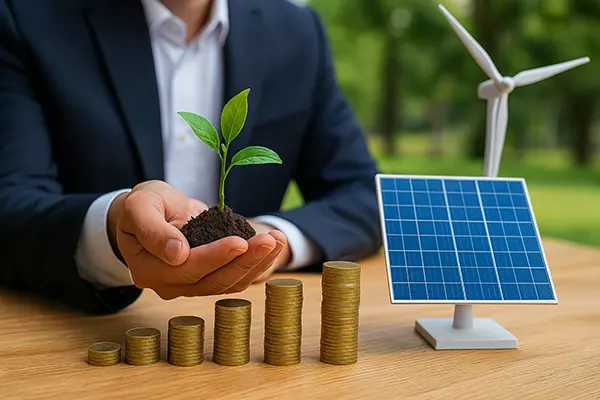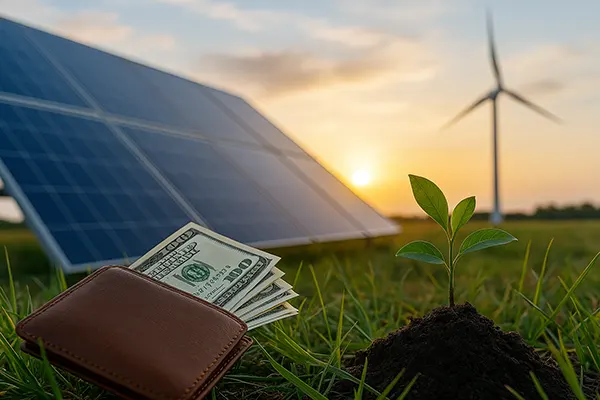
Investing in Climate Startups: How to Identify Promising Projects in 2025
In recent years, climate startups have become one of the most dynamic sectors for private investors seeking both impact and returns. With increasing global focus on sustainability and green innovation, 2025 offers more opportunities than ever to support environmentally responsible businesses at an early stage. But with such a crowded landscape, how can individuals find ventures that are not only eco-conscious but also viable in the long run? In this article, we explore actionable ways to identify trustworthy climate-friendly startups, the platforms that facilitate investments, and practical tips for vetting green innovations.
Where to Discover Climate Startups Worth Investing In
The first step for aspiring climate-conscious investors is knowing where to look. Fortunately, several well-established platforms have emerged, connecting individual investors with vetted green tech startups. Websites such as Seedrs, Crowdcube, and OnePlanetCapital offer investment opportunities in renewable energy, sustainable agriculture, and carbon capture technologies. These platforms conduct preliminary due diligence, making them a great starting point for beginners.
For those seeking greater diversification, venture capital syndicates like Green Angel Syndicate in the UK or Blue Horizon in Switzerland offer co-investment opportunities in pre-screened, high-potential startups. Many of these groups also provide educational resources and forums for investors to learn more about market trends and technological innovations.
Additionally, ESG-focused crowdfunding platforms such as WiSeed (France) and Abundance Investment (UK) provide lower-threshold access to projects in solar energy, energy-efficient construction, and eco-transport. These allow investors to start small — sometimes with as little as £100 — and gradually scale their impact.
How to Use Online Platforms Safely
While these platforms are a valuable resource, investors must remain vigilant. Not all projects claiming to be “green” are sustainable in practice. Always verify whether a platform is authorised by a financial authority, such as the UK’s FCA or a similar European regulator. This ensures a basic standard of investor protection and transparency.
Reviewing past project successes and investor feedback on these platforms can also give insight into their reliability. Trusted platforms typically provide access to pitch decks, financial forecasts, and environmental impact reports, allowing for a well-rounded evaluation.
Finally, consider joining relevant investor communities or forums. Groups like Angel Investment Network or Cleantech Group provide updates and peer reviews, often exposing weak startups before they reach funding targets. Peer validation is especially useful in the early-stage startup scene, where risks are inherently high.
Checklist for Evaluating Green Startups in 2025
To separate high-impact startups from greenwashing attempts, it’s essential to develop an evaluation framework. One of the most effective methods is a practical checklist covering key performance and impact indicators. Start with the basics: Does the startup have a scalable business model? Is the product or service addressing a quantifiable environmental problem, such as carbon emissions, plastic waste, or deforestation?
Next, analyse the founding team. Do they possess relevant industry experience and technical background? Founders with previous successes in the sustainability space tend to attract better funding and strategic partnerships. Platforms such as LinkedIn and Crunchbase can be helpful tools for checking founder track records.
Lastly, look at third-party certifications and partnerships. Startups aligned with organisations like the Solar Impulse Foundation, CleanTech Open, or B Corporation demonstrate additional layers of environmental commitment. These certifications are not foolproof but often indicate that the startup has undergone rigorous evaluation.
Red Flags to Watch Out For
Beware of vague business plans or impact metrics. Startups that use buzzwords like “eco-friendly” or “net zero” without detailed explanations are often lacking substance. Authentic green startups typically publish clear sustainability reports or lifecycle assessments.
Another red flag is aggressive fundraising without a minimum viable product (MVP). While pre-revenue startups can be legitimate, having no prototype or early customer validation is risky. Insist on a working model or pilot results before investing.
Finally, be cautious of startups that focus excessively on subsidies or grants as revenue. While initial support is normal, long-term dependence on government funding can make a business unsustainable once incentives are reduced or withdrawn.

Trends Driving Green Innovation in 2025
Several macroeconomic and political forces are shaping climate innovation this year. Notably, the EU’s Green Deal and the UK’s Net Zero Strategy continue to incentivise private investments in clean technologies. These policies create fertile ground for startups in battery storage, carbon credits, and next-gen agriculture.
Artificial Intelligence (AI) has also become a game-changer for the sector. In 2025, startups are increasingly using AI to optimise energy consumption in buildings, manage water resources, and predict supply chain emissions. For investors, this means new opportunities at the intersection of deep tech and climate solutions.
Finally, climate risk disclosure regulations — like the Corporate Sustainability Reporting Directive (CSRD) — are forcing companies to be more transparent. This benefits green startups, which often outperform traditional companies in ESG metrics. As businesses adapt to regulatory pressures, demand for climate-focused B2B services is expected to rise significantly.
Sectors with High Investment Potential
Carbon removal technologies are receiving a surge of attention. Startups like Climeworks and Charm Industrial are developing scalable carbon capture methods that attract large-scale investment. These are often capital-intensive but offer long-term upside for impact-driven investors.
The circular economy is another hot area. From biodegradable packaging to repairable electronics, the demand for sustainable alternatives is growing. Investors can find opportunities in both consumer-facing and industrial startups focusing on waste reduction.
Lastly, climate fintech is an emerging field. These are startups that build financial tools to help individuals and institutions track, reduce, or offset their carbon footprint. Platforms like Cooler Future or Doconomy are leading examples of how climate and finance are converging in innovative ways.
